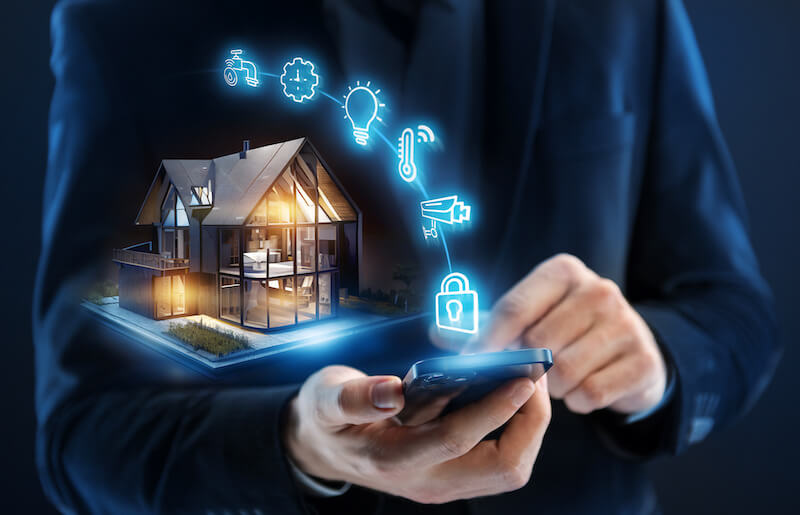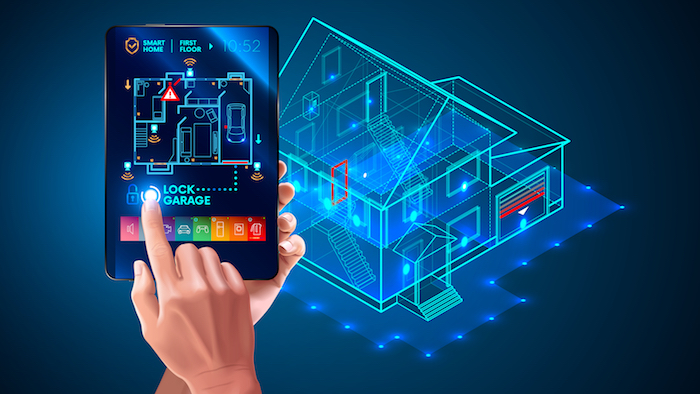Smart Home Technology: Transforming Your Living Space into a Future-Ready Haven

In today’s rapidly evolving world, smart home technology is changing the way we interact with our homes. With innovations like voice-controlled assistants, automated lighting, and smart security systems, homeowners now have the power to control nearly every aspect of their living environment with just a few taps or voice commands. But what exactly is smart home technology? How can it benefit your daily life, and what are the best devices to consider? In this article, we’ll explore everything you need to know about transforming your house into a smart home.
What is Smart Home Technology?
Smart home technology refers to the integration of devices and systems that enable homeowners to control various functions of their home remotely, usually through smartphones or voice assistants like Amazon Alexa, Google Assistant, or Apple Siri. These devices are connected via the Internet of Things (IoT), allowing for seamless communication between gadgets, appliances, and even entire home systems.
Key Components of a Smart Home
- Smart Lights: These allow you to control lighting remotely, set schedules, and even change colors or brightness using your phone or voice commands.
- Smart Thermostats: Devices like the Nest Thermostat help manage your home’s temperature automatically, learning your habits to save energy and enhance comfort.
- Smart Security Systems: Features such as video doorbells, motion sensors, and smart locks enhance security and peace of mind.
- Voice Assistants: Devices like Amazon Echo or Google Nest serve as the central control hub for your smart devices, responding to voice commands for a hands-free experience.
- Smart Appliances: From refrigerators to washing machines, smart appliances are becoming more commonplace in homes, offering features such as remote control, diagnostics, and efficiency tracking.
Why Should You Embrace Smart Home Technology?
Smart homes offer a wide range of benefits, from improving convenience and security to saving energy and even increasing your home’s value. Let’s explore some of the top reasons why smart home technology is worth considering:
1. Convenience and Control
With smart devices, you can manage your home from anywhere, anytime. Forgot to turn off the lights? Simply use your smartphone to switch them off. Need to preheat the oven while on your way home from work? Smart appliances make it possible to do all this and more.
2. Enhanced Security
Smart security systems offer features such as real-time surveillance, motion detection, and remote monitoring. With video doorbells, you can check who’s at your door from your phone, even when you’re not home. Moreover, smart locks allow you to lock or unlock doors remotely, ensuring your home is secure no matter where you are.
:max_bytes(150000):strip_icc()/smart-home.asp-final-5de0da3d6d8a474f9028d26c957255fe.png)
3. Energy Efficiency and Cost Savings
Smart thermostats like Nest or Ecobee learn your schedule and adjust heating or cooling automatically to reduce energy waste. Similarly, smart lighting systems can be set on timers or controlled remotely, preventing lights from being left on unnecessarily. Over time, these devices can lead to significant savings on utility bills.
4. Personalized Experience
With smart home tech, your home can adapt to your preferences. Want your house to get cozy as soon as you walk in? Smart lighting, thermostats, and other devices can be programmed to your liking, creating the perfect environment for relaxation or productivity.
5. Future-Proofing Your Home
As technology continues to advance, upgrading to a smart home can help future-proof your living space. Smart homes increase your property’s value and appeal to tech-savvy buyers, making it a wise investment if you plan on selling in the future.
Popular Smart Home Devices You Should Consider
Now that you understand the benefits of a smart home, let’s take a look at some of the top devices that can help you get started on your smart home journey.
1. Smart Lighting Systems
Smart lights are one of the most accessible smart home devices, and they come in various options, including bulbs, strips, and lamps.
- Philips Hue: Known for its extensive range of smart bulbs and light strips, Philips Hue offers customizable lighting with millions of color options.
- LIFX: LIFX offers Wi-Fi-enabled smart bulbs that do not require a hub, making installation a breeze.
2. Smart Thermostats
- Nest Thermostat: The Nest is one of the most popular smart thermostats, offering a sleek design and energy-saving features like automatic temperature adjustments based on your schedule.
- Ecobee: Ecobee offers smart thermostats with features like room sensors, which ensure the temperature remains consistent throughout your home.
3. Smart Security Systems
- Ring Video Doorbell: Ring allows you to see and speak to visitors remotely via your smartphone. With features like motion detection and night vision, Ring ensures your home’s security is always monitored.
- Arlo Pro 3: A wireless security camera with 4K resolution, color night vision, and motion detection, ideal for keeping an eye on both the interior and exterior of your home.

4. Smart Speakers and Voice Assistants
- Amazon Echo: Alexa, Amazon’s voice assistant, can control compatible devices, play music, answer questions, and more. With built-in smart home integration, Amazon Echo is an excellent hub for your smart devices.
- Google Nest Hub: Google’s smart speaker combines the power of Google Assistant with a touch display to control your smart home, play videos, and keep track of your schedule.
5. Smart Plugs and Outlets
Smart plugs are a simple and cost-effective way to make non-smart devices smart. These plugs allow you to control everyday appliances like lamps, coffee makers, or fans remotely.
- TP-Link Kasa Smart Plug: A reliable and affordable option, the TP-Link Kasa offers voice control via Amazon Alexa or Google Assistant.
How to Set Up Your Smart Home
Setting up your smart home is easier than you might think. Follow these simple steps to begin your journey:
- Choose Your Hub: Start by selecting a voice assistant or central hub like Amazon Echo or Google Nest. This will serve as the control center for your devices.
- Start with Basic Devices: Begin with essential devices such as smart lights or a smart thermostat. These will give you a quick introduction to the benefits of smart technology.
- Install and Integrate: Follow the manufacturer’s instructions for each device, ensuring they’re properly integrated into your home network.
- Customize: Adjust settings, create schedules, and personalize your smart home experience to suit your lifestyle.
Future Trends in Smart Home Technology
As technology continues to advance, the future of smart homes looks incredibly exciting. Here are a few trends to watch out for:
1. AI and Machine Learning
AI is playing a larger role in smart home technology, enabling devices to learn from your habits and adapt accordingly. Expect smarter thermostats, lighting systems, and security cameras that can predict your needs and optimize your home’s functionality.
2. Increased Integration
In the future, more devices will seamlessly work together. From refrigerators that help you meal prep to lighting that adjusts based on the time of day, integration between devices will enhance the overall user experience.
3. Health and Wellness Monitoring
Smart homes are becoming more attuned to health and wellness, with devices like sleep trackers and air quality monitors providing real-time data to improve your living environment.
4. Advanced Home Automation
Home automation will continue to evolve, allowing for even greater levels of customization. Imagine your home responding to voice commands, facial recognition, or even biometric data, all working together to create a personalized, efficient living space.
Frequently Asked Questions (FAQs)
Q1: Is smart home technology difficult to set up?
Not at all! Most smart home devices are easy to install and come with step-by-step instructions. Plus, many devices can be controlled through apps, making setup a breeze.
Q2: Are smart homes safe?
Yes, but it’s important to ensure your smart home is secure by using strong passwords and enabling two-factor authentication on your devices.
Q3: Can I add new smart devices to my existing smart home setup?
Absolutely! One of the advantages of smart home technology is the ability to expand and integrate new devices seamlessly. Whether you’re adding a new thermostat, light bulb, or security camera, it’s easy to grow your system.
Conclusion
Smart home technology offers a world of convenience, comfort, and security, transforming your living space into a future-ready haven. From enhancing your daily life with smart lighting and thermostats to ensuring your home is safe and secure, the possibilities are endless. By embracing smart home devices, you can improve your
home’s efficiency, personalize your environment, and even save on energy bills.
So, why wait? Dive into the world of smart home technology today and create a living space that works for you—efficiently, securely, and intelligently.
Explore more about smart home technologies and how they’re shaping our future in this insightful guide from Investopedia.

